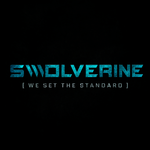Semax is a synthetic peptide developed in Russia in the 1980s as a nootropic and neuroprotective agent. Unlike many cognitive enhancers, Semax has been used as a registered pharmaceutical in Russia and CIS countries for decades, where it is prescribed for conditions such as stroke recovery, traumatic brain injury, cognitive decline, and optic nerve disease.
What makes Semax unique is its intranasal delivery, allowing rapid absorption into the brain while bypassing the digestive system. In research and clinical practice, dosing protocols vary depending on whether the goal is cognitive enhancement, neuroprotection, or recovery from neurological damage
This guide breaks down Semax dosing protocols, including standard clinical regimens, experimental nootropic use, cycle lengths, and safety considerations
What Is Semax?
Semax is a synthetic peptide derived from the adrenocorticotropic hormone (ACTH) fragment Met-Glu-His-Phe-Pro-Gly-Pro. Unlike ACTH itself, it does not stimulate cortisol release, making it safe for long-term neurological use
It was developed by Russian researchers in the late 1980s and is still manufactured and prescribed in Russia today. Clinically, it is used for:
→ Neuroprotection after ischemic stroke and traumatic brain injury.
→ Cognitive enhancement in patients with memory or attention deficits.
→ Ophthalmology, particularly optic nerve disorders.
→ General nootropic support, including experimental use for learning and focus.
Koroleva, S. V., and N. F. Myasoedov. "Semax as a universal drug for therapy and research." Biology Bulletin 45.6 (2018): 589-600.
How Semax Works
The mechanism of action is multifaceted, targeting several neurochemical pathways:
→ Neurotrophic factor modulation: Semax upregulates brain-derived neurotrophic factor (BDNF) and related signaling proteins, which support neuroplasticity and memory formation
→ Neuroprotection during stress: It protects neurons under conditions of oxidative stress and hypoxia, limiting cell death after stroke or injury
→ Dopaminergic and serotonergic effects: Animal and human studies suggest Semax modulates dopamine and serotonin pathways, improving mood and motivation
→ Anti-inflammatory properties: Research shows Semax reduces pro-inflammatory cytokines, adding to its neuroprotective role
Bottom line: Semax works by supporting neuroplasticity, enhancing neurotransmitter balance, and protecting neurons, which is why dosing protocols differ between cognitive enhancement and neurological recovery.
Benefits of Semax
Semax is a synthetic peptide with powerful nootropic and neuroprotective properties. Originally developed for neurological conditions, it has gained attention in the performance and wellness community for its ability to enhance brain function, protect against stress, and support long-term cognitive health.
→ Cognitive Enhancement
Semax is widely recognized for boosting focus, learning, and memory. By influencing brain-derived neurotrophic factor (BDNF) and dopamine pathways, it supports mental clarity and sharpness, making it a popular choice for individuals seeking heightened productivity and sustained attention.
→ Neuroprotection & Recovery
One of the most notable benefits of Semax is its ability to protect neurons from damage caused by stress, ischemia, and oxidative processes. This makes it particularly valuable for athletes and professionals under high physical or mental stress, as it may accelerate recovery from both intense training and cognitive fatigue.
→ Mood & Stress Regulation
Semax interacts with neurotransmitter systems that regulate mood, particularly dopamine and serotonin. Users often report greater emotional stability, reduced anxiety, and improved resilience in stressful environments, giving it potential applications for both performance and mental health.
→ Circulation & Oxygen Efficiency
Research suggests that Semax improves cerebral blood flow and oxygen utilization. For athletes and high-performers, this translates into greater endurance, reduced mental fatigue, and improved recovery under conditions of stress or oxygen deprivation.
Standard Clinical Dosing Protocols
In Russian medical practice, Semax is formulated as 0.1% or 1% intranasal drops. The dosage depends on the indication — whether it’s being used for stroke recovery, cognitive decline, or general nootropic effects.
0.1% Semax Solution (Most Common Form)
→ Cognitive enhancement / mild impairment:
Typical regimen is 1–2 drops per nostril, 2× daily, lasting 10–14 days
→ Prevention of cognitive fatigue (students, high workload):
Protocols recommend 2 drops per nostril, once or twice daily during periods of mental stress, for up to 2 weeks.
1% Semax Solution (Clinical/Neurological Use)
→ Stroke and ischemic injury:
Used in more serious neurological cases, with dosing of 2–3 drops per nostril, 3–4× daily, for 5–10 days
→ Optic nerve disease:
Protocols mirror the stroke dosing, with treatment durations extending up to 10 days, sometimes repeated after a break.
General Guidelines
→ Drops should be administered directly onto the nasal mucosa, with the head tilted slightly back to avoid drainage into the throat.
→ Typical course lengths are short-term (5–16 days) rather than continuous long-term dosing.
→ Repeat cycles are possible after a 1–3 month interval depending on indication.
Tabbi, Giovanni, et al. "Semax, an ACTH4-10 peptide analog with high affinity for copper (II) ion and protective ability against metal induced cell toxicity." Journal of Inorganic Biochemistry 142 (2015): 39-46.
Nootropic and Experimental Dosing
Outside of Russia’s clinical settings, Semax has gained popularity in the nootropic community for its focus, memory, and mood-enhancing effects. Since it is not FDA-approved, dosing is often adapted from Russian prescribing practices and anecdotal user reports.
Common Nootropic Protocols
→ Microdosing for focus:
0.1% solution at 1–2 drops per nostril, 1–2× daily, used for 5–10 days during periods of high cognitive demand
→ Productivity / learning cycles:
Short-term courses of 10–14 days, then discontinued. Some users repeat cycles every 1–3 months to avoid tolerance.
Adaptations from Clinical Practice
→ Mild neuroprotection: Higher-frequency dosing (up to 2–3× daily) is sometimes used by biohackers, though most stay within clinical 0.1% guidelines.
→ Combination with other nootropics: Anecdotally, Semax is paired with Selank for stress/focus balance, or stimulants like caffeine to enhance attention.
Practical Use Considerations
→ Semax is usually taken intranasally only — oral or sublingual routes have very poor bioavailability.
→ Most users prefer morning and early afternoon dosing to align with natural cognitive rhythms and avoid potential overstimulation in the evening.
Stavchansky, Vasily V., et al. "The effect of Semax and its C-end peptide PGP on the morphology and proliferative activity of rat brain cells during experimental ischemia: a pilot study." Journal of Molecular Neuroscience 45.2 (2011): 177-185.
Cycle Length and Best Practices
Unlike traditional nootropics or prescription drugs, Semax is not designed for continuous, long-term daily use. Both clinical and experimental practice favor short cycles with breaks in between.
Typical Cycle Durations
→ Cognitive support / mild enhancement:
5–10 days, usually during exams, work projects, or periods of heavy stress.
→ Neurological recovery (stroke, TBI):
5–16 days depending on severity, sometimes repeated in multiple short courses
→ General nootropic users:
Many run 10–14 day cycles and then take a 1–3 month break before repeating.
Why Short Cycles Work Best
→ Semax exerts its effects by upregulating BDNF and neurotrophic factors — pathways that can adapt quickly if overstimulated.
→ Continuous use may blunt responsiveness, which is why cycling helps maintain efficacy
Best Practices
→ Morning/afternoon dosing: Avoids possible interference with natural sleep-wake cycles.
→ Avoid vasoconstrictive sprays: Using decongestants alongside Semax may reduce absorption.
→ Track mental performance: Users often log concentration, memory, and mood to adjust cycle length for best results.
Side Effects of Semax Peptide
Semax is considered well-tolerated in both clinical use and experimental nootropic settings. Most adverse effects are mild and localized to the nasal route of administration, though some metabolic changes have been documented in specific populations.
Commonly Reported Effects
→ Nasal irritation: Dryness, burning, or mild discomfort in the nasal cavity are the most frequently noted side effects
→ Discoloration of nasal mucosa: Russian prescribing information notes a small percentage (~10%) of users experience visible changes in nasal lining
Less Common Effects
→ Metabolic impact in diabetics: In clinical observations, ~7.4% of diabetic patients showed mild increases in blood glucose levels during Semax use
→ Headache or fatigue: Rarely reported in user communities, though not consistently observed in clinical trials.
Serious Adverse Events
→ To date, no consistent reports of severe toxicity, organ damage, or dependence have been published in the medical literature
Practical Safety Notes
→ Side effects are dose-dependent — higher-strength 1% solutions are more likely to produce nasal irritation than the standard 0.1%.
→ Avoid prolonged continuous use; short cycles reduce both tolerance and the risk of cumulative nasal irritation.
Sudarkina, Olga Yu, et al. "Brain protein expression profile confirms the protective effect of the ACTH (4–7) PGP peptide (Semax) in a rat model of cerebral ischemia–reperfusion." International Journal of Molecular Sciences 22.12 (2021): 6179.
Legal Status of Semax
→ United States: Semax is not approved by the FDA as a drug or dietary supplement. It is sold only as a research chemical, typically labeled “not for human use” to comply with regulatory restrictions
→ Russia and CIS countries: Semax is a registered pharmaceutical, available by prescription for conditions such as ischemic stroke, optic nerve disease, and cognitive impairment. It has been in clinical use there since the 1990s
→ European Union and UK: Semax has no authorization as a medicine, and possession or sale often falls under gray-market rules for unapproved compounds. Importation is typically restricted unless labeled for laboratory research.
→ Sports regulation: Semax does not appear on the World Anti-Doping Agency (WADA) Prohibited List as of 2025, but athletes should use caution as peptide regulations are subject to change
Conclusion
Semax stands out as a unique peptide with strong clinical roots in Russia, where it is prescribed for stroke recovery, traumatic brain injury, and cognitive impairment. Beyond clinical use, it has gained traction in the nootropic community for its potential to enhance focus, memory, and resilience to stress.
Dosing protocols vary depending on context:
→ 0.1% solution is most common, used for cognitive support and mild neuroprotection, typically in short 5–14 day cycles.
→ 1% solution is reserved for neurological conditions like stroke recovery, with higher-frequency regimens lasting 5–10 days.
→ Experimental nootropic users often adapt clinical cycles for learning, productivity, and mental stamina, repeating courses every 1–3 months.
Side effects are generally mild — nasal irritation and mucosa discoloration being most common, with occasional glucose elevations in diabetics. While Semax is approved in Russia and CIS countries, it remains unregulated in the U.S. and EU, sold only as a research chemical.
Bottom line: Semax offers intriguing benefits for cognition and neuroprotection, but its use outside Russia remains experimental. Anyone considering it should weigh the limited human data, regulatory gray areas, and the importance of short, well-planned dosing cycles for safe and effective results.
Semax Dosing — FAQ
How do you take Semax?
Semax is administered intranasally. Drops are applied directly to the nasal mucosa, typically 1–2 drops per nostril, 1–3 times daily, depending on the formulation and purpose
How long should a Semax cycle last?
Most clinical and nootropic protocols recommend short cycles of 5–14 days. For neurological recovery, cycles may last up to 16 days. Users typically take breaks of 1–3 months before repeating to maintain effectiveness
What’s the difference between 0.1% and 1% Semax?
→ 0.1% solution: Used for cognitive enhancement, focus, and mild neuroprotection.
→ 1% solution: Reserved for clinical conditions like ischemic stroke or optic nerve disease. Higher concentrations increase potency but also the chance of nasal irritation.
Can you take Semax daily?
Yes, but only for short courses. Continuous daily use is not recommended, as its effects are linked to BDNF and neurotrophic signaling, which can diminish with overstimulation (
Is Semax legal to buy?
→ Russia/CIS: Approved pharmaceutical, prescription required.
→ United States/EU: Not approved; available only as a research chemical, typically labeled “not for human use”







